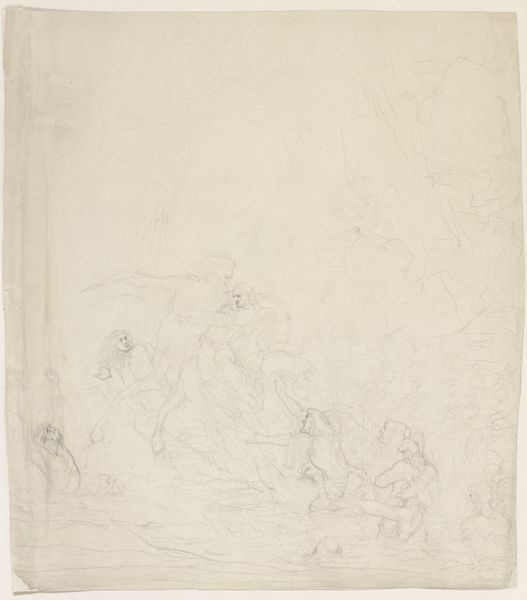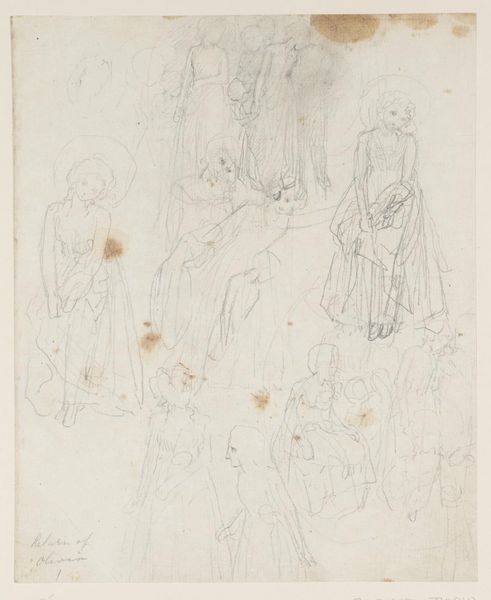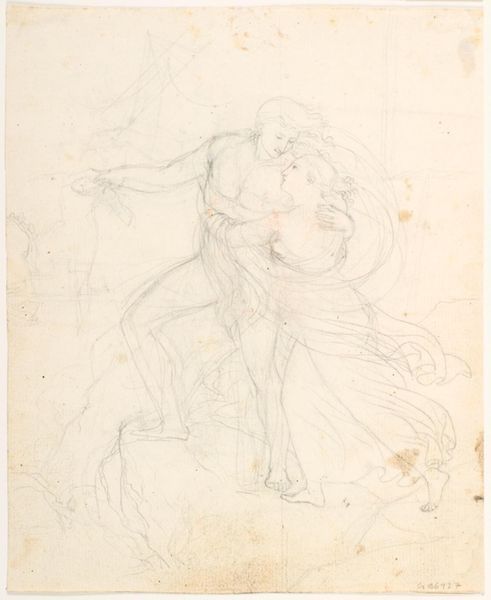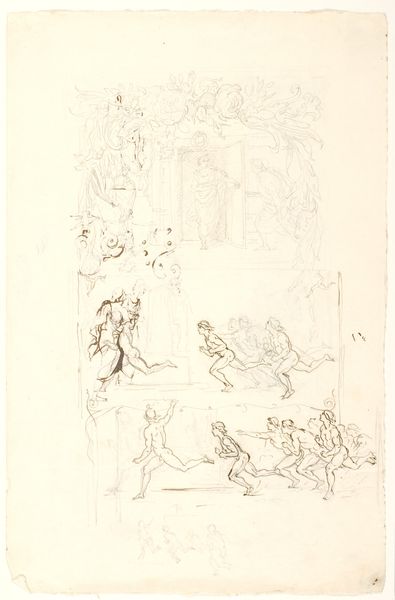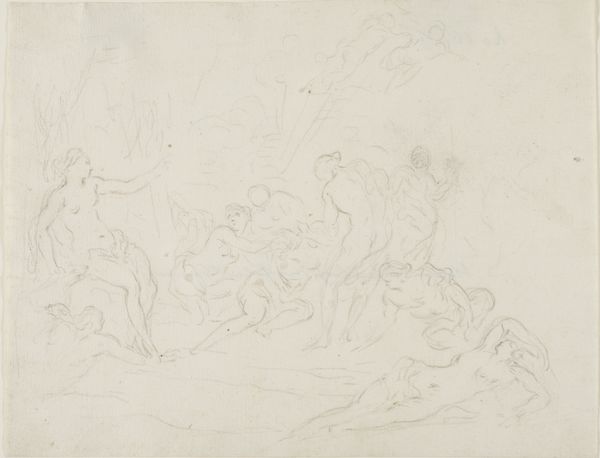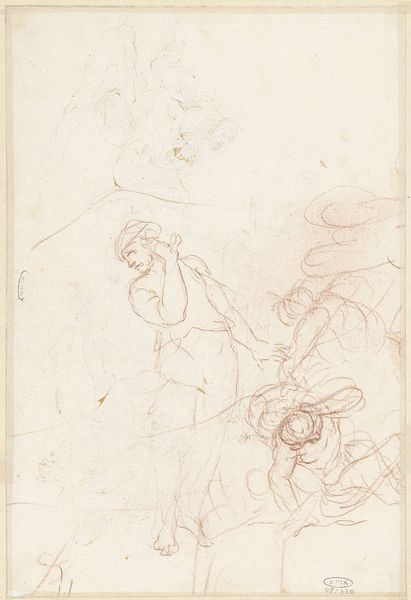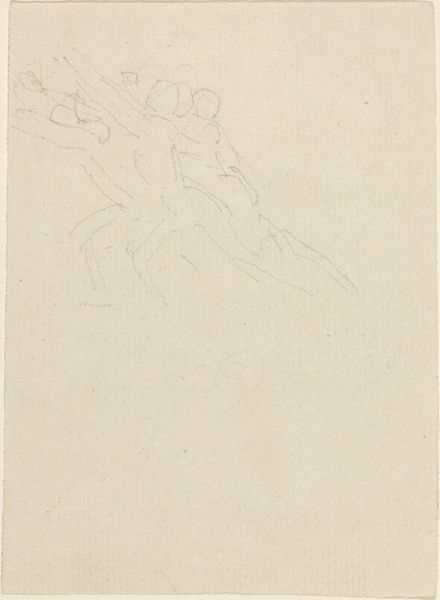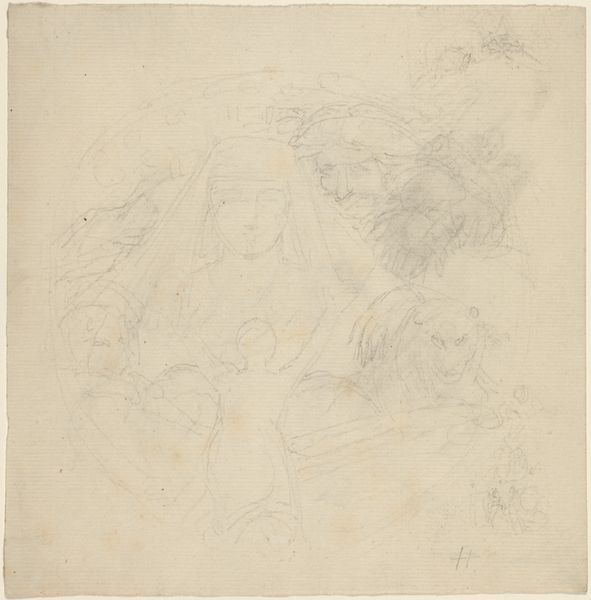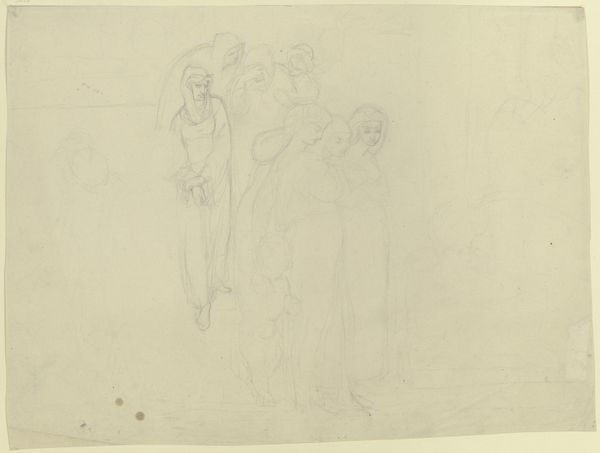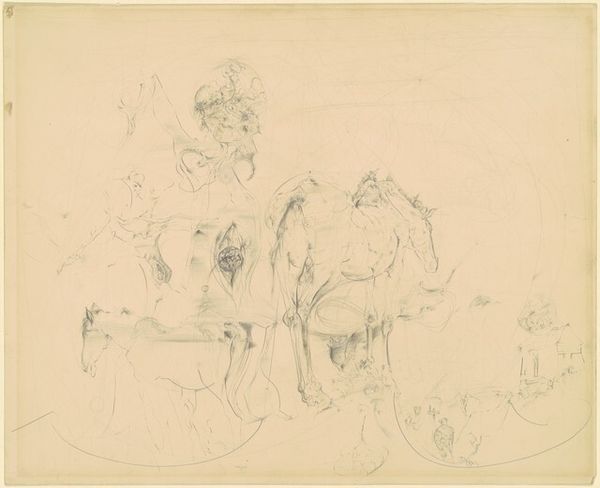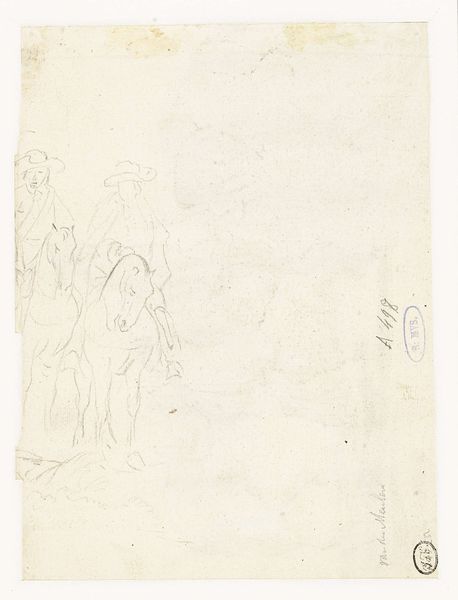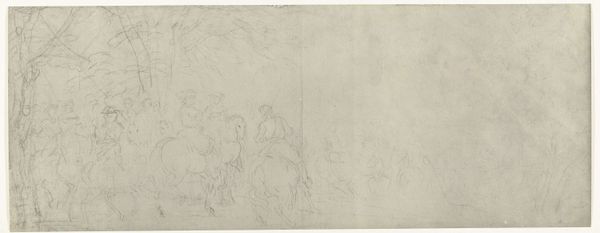
drawing, pencil
#
drawing
#
landscape
#
figuration
#
romanticism
#
pencil
Dimensions: 255 mm (height) x 189 mm (width) (bladmaal)
Curator: Ah, here we are standing before "Moses Descending from Sinai" a pencil drawing created between 1816 and 1852 by Dankvart Dreyer. Editor: My goodness, it's… tentative. Like a half-remembered dream rendered in the palest grey. I can almost feel the artist’s hand hovering, unsure if it dares to fully commit to the image. Curator: Well, it is a preliminary drawing, a sketch if you will, revealing the bare bones of what could have been a finished work. Notice how Dreyer uses the pencil to define the mountainous landscape in the background against which we see Moses holding the tablets. In the foreground are figures, some kneeling. Editor: Yes, they are kneeling as if struck by awe and fear and I like the restraint! Most depictions of Moses coming down from Sinai are, let's face it, bombastic. But here we see him almost reluctantly, a lonely figure against this imposing, almost ghostly backdrop. He looks almost embarrassed to be bringing down the law. Curator: A somewhat unusual interpretation, indeed! Dreyer, aligning with the Romanticism prevalent at the time, may have wanted to depict the psychological drama, of an encounter with the divine, instead of mere narrative spectacle. What do you make of his landscape treatment? Editor: It feels as important as the figures themselves, doesn’t it? Those mountains aren’t just scenery; they seem to dwarf Moses, highlighting the immensity and power of the divine in contrast to the single figure that represents God’s covenant with men. It is very much in keeping with Romantic landscapes that place humans amidst nature, in which the latter dominates the former. Curator: Romanticism's influence is quite evident in his interest in expressing heightened emotion, his spiritual exploration. But consider, also, that as an artist deeply engaged in his cultural moment, Dreyer may have wanted to emphasize that law, as necessary as it may be for a civil society, can be a harsh master, especially when faced with questions of morality and judgment. Editor: Hmm. That might very well be a good point, and something I had not considered! The incompleteness gives the drawing power, though, doesn’t it? A haunting suggestion. I love how this sketch suggests a much larger story. Curator: It is definitely a piece that lingers. I, for one, shall never again think of Moses without thinking of him as this lonely character descending a nearly invisible mountain range!
Comments
No comments
Be the first to comment and join the conversation on the ultimate creative platform.
